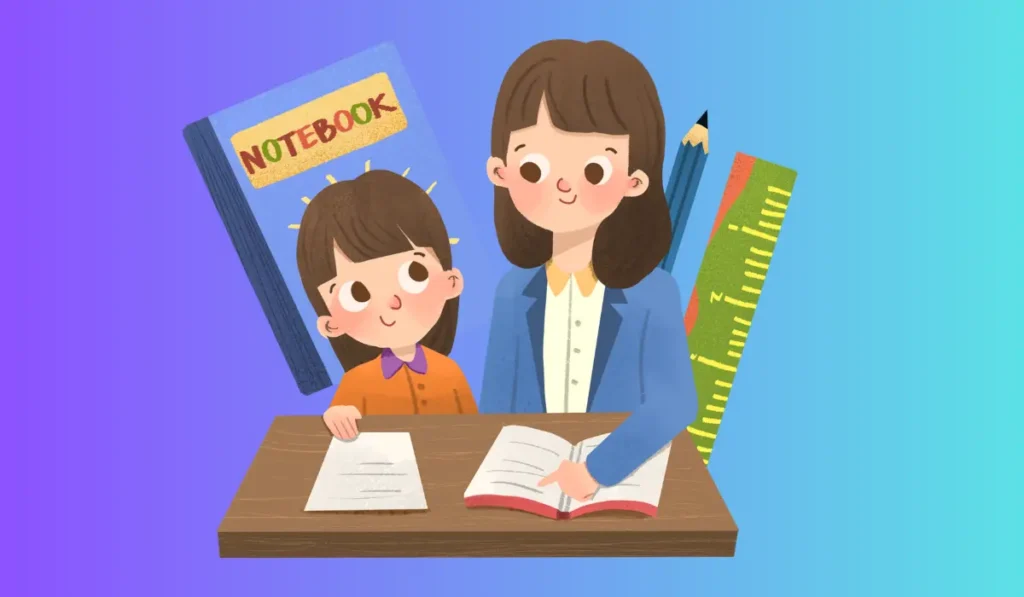Teaching is a complex process that involves various factors. It requires careful planning and execution of strategies that aim to enhance the academic performance of students.
At the same time, it requires teachers to be creative and flexible in their approach, adapting their teaching style to suit different student needs and learning styles.
The debate over whether teaching is a science or an art has been ongoing for a long time, with both sides presenting compelling arguments.
However, in reality, teaching is a combination of the two – teachers need to have a good grasp of the scientific methods used to enhance learning, as well as the creative skills required to make their teaching engaging and meaningful.

Teaching As A Science
Teaching has long been regarded as an art. However, evidence has shown that pedagogy is more than just an art form; it’s a science. Teaching as a science acknowledges that teaching strategies are based on empirical evidence and a systematic approach to learning.
This approach helps educators develop effective methods of delivering content to students that yield successful learning outcomes.
Scientific Principles Applied To Teaching
Teaching, like any other science, runs on a set of principles. In education, these principles involve the systematic design, development, and application of instructional techniques that support the learning objectives.
To achieve this, the following scientific principles are key:
- Observation
- Critique and analysis
- Hypothesis testing
- Rigorous testing and revision
- Replication
Teaching adheres to these principles by observing learners to identify their strengths and weaknesses and using this information to develop individualized instructional plans.
Research Evidence Supporting Teaching As A Science
Countless research studies support the idea of teaching as a science. These studies show that the scientific method can be utilized effectively in the classroom to boost student learning outcomes in a variety of subject areas.
Systematic application of evidence-based instructional practices has been shown to improve student engagement, motivation, memory retention, and transfer of learning.
This is particularly true for stem subjects, where evidence-based strategies go a long way toward improving conceptions of complex ideas.

Teaching As An Art
When it comes to teaching, there are two schools of thought; it’s either a science or it is an art. When we treat teaching as an art, we focus on creating an environment that nurtures creativity and encourages self-expression.
Definition Of Teaching As An Art
Teaching as an art is an approach to education that emphasizes the creative side of teaching. It is a way of teaching that recognizes the importance of personal expression and the role it plays in the learning process.
Teachers who approach teaching as an art view the classroom as a canvas and see themselves as artists who paint a picture using the students as their medium.
Characteristics Of Teacher Artistry
Here are some of the characteristics that define a teacher who approaches teaching as an art:
- Creative: They are imaginative and devise novel ways to engage students in learning.
- Passionate: They are enthusiastic and love teaching; it’s not just a job to them.
- Intuitive: They instinctively understand their students’ needs and feelings.
- Innovative: They are willing to take risks and try new techniques to help their students learn.
- Expressive: They convey their thoughts and ideas with clarity and conviction.
Creative Practices Used In Teaching
If we are to consider teaching as an art, then the techniques used by teachers should reflect the creative process. Here are some of the creative practices used in teaching as an art:
- Storytelling: Stories can be a powerful tool for teaching and connecting with students.
- Role-playing: Role-playing can help students understand complex concepts by experiencing them firsthand.
- Music: Music can be a great way to engage students and make lessons more memorable.
- Artistic expression: Encouraging students to express themselves through art can help them develop their creativity.
- Drama: Drama can help students develop their communication and collaboration skills.
- Using Tools: Using a free slideshow maker can further enhance these creative methods, allowing teachers to present information in a visually engaging and dynamic way.

Teaching As A Combination Of Science And Art
Teaching is a profession that requires a combination of scientific knowledge and artistic creativity. It involves applying scientific principles in organizing and delivering instruction, as well as utilizing creative practices to engage students and ultimately enhance learning outcomes.
This section of the blog post will explore the integration of scientific principles and creative practices in teaching, provide examples of effective teaching that blend science and art, and highlight the advantages of combining both approaches in teaching.
How Teaching Can Be A Combination Of Science And Art
Teaching involves both science and art because it requires applying scientific principles, such as education theories, human psychology, and instructional methodologies. And integrating creative practices, such as lesson planning, presentation, storytelling, and humor, to make learning fun and engaging for students.
Teachers who can strike a balance between the two approaches are more likely to achieve their desired outcomes, which are student learning and success.
Scientific Principles And Creative Practices In Teaching
The successful integration of scientific knowledge and artistry in teaching can lead to great results. Here are some examples:
- Scientific principles such as Bloom’s taxonomy can be used creatively by teachers in the form of learning games, storytelling, and case studies.
- Creative practices like visual aids, classroom decorations, and short videos can be used alongside classroom management and optimizing learning environment scientific principles.
- Combining project-based learning, group activities, and simulations with scientific principles like social constructivism, and problem-based learning are effective in classrooms.
Examples Of Effective Teaching That Blend Science And Art
Here are some examples of teachers who have successfully blended science and art in their teaching approach:
- A science teacher who uses storytelling and humor to explain complex scientific concepts engages students and makes learning fun.
- A maths teacher who incorporates visual aids and interactive practices to represent problems and solves them creatively, making learning interesting.
- An English teacher who uses podcasts, stage plays, and poetry to teach literary elements, making it easier for students to grasp concepts.
Advantages Of Combining Both Approaches In Teaching
Here are some of the advantages of combining scientific principles and creative practices in teaching:
- Improved learning outcomes and student engagement.
- Enhancing critical thinking and creative problem-solving skills among students.
- Development of innovation, creativity, and motivation among students.
- Better classroom management and student-teacher rapport.
Teaching requires both scientific knowledge and creativity to be effective, teachers who achieve a balance between science and art in their teaching approach tend to be successful.
So, applying scientific principles and blending them with creative practices can lead to improving learning outcomes, engagement, and student success in the classroom.
Frequently Asked Questions
Is Teaching A Science Or An Art?
Teaching is both a science and an art. It involves a systematic approach to imparting knowledge, skills, and different learning styles. Still, it also requires creativity, intuition, and a personal touch to connect with students.
What Is The Science Of Teaching?
The science of teaching is a systematic and data-driven approach to education. It involves understanding how students learn, identifying their individual needs and preparing instructional materials that match.
What Is The Art Of Teaching?
The art of teaching involves creativity, responsiveness, empathy, and intuition, which allows teachers to better connect with their students and deliver the course material in a way that resonates with them.
Can You Teach Without Science?
While it’s possible to teach without science, the approach may be less effective and more challenging. Without science, it’s harder to understand how students learn, create effective instructional materials, and adjust teaching methods to suit different learning styles and abilities.
How Does The Art Of Teaching Help Students?
The art of teaching brings excitement, interest, and engagement into the classroom. Using different teaching strategies to resonate with different students helps them to connect and internalize the material better, leading to better learning outcomes.
Conclusion
Teaching is an art that requires specific skills combined with scientific principles. Both art and science are critical to an effective teaching practice. Science provides the foundation for the theoretical framework from which to teach, while the art of teaching fosters emotional connections with the students, resulting in a more meaningful experience. Striking a balance between these two is essential for creating a positive and productive learning environment.


